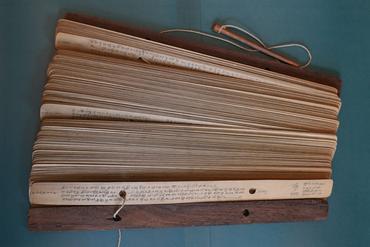Printing press and the tradition of palm leaf manuscripts

This paper attempts to put together dispersed information in the missionary archives to reconstruct the pioneering work of the Danish missionaries in bringing print to the Tamil country in the early 18th century. The specific locus of the interaction was the small town of Tranquebar on the Coromandel Coast. In the process of reconstructing the interaction, this paper seeks to understand how a new communication technology—the print medium—encountered a culture with a long history of textual production. This cultural interaction entailed a dialogue between missionaries from the west who had deeply imbued a negative understanding of indigenous culture and were impelled by a desire to proselytise, and a native elite steeped in indigenous forms of cultural production and reproduction. The missionary access to knowledge was mediated by native intellectuals who held their ground. The quest for knowledge to understand indigenous culture also led them to seek out palm leaf manuscripts. Not only the content but also the material artefact of the indigenous book, written as it was on palm leaves, posed a challenge to the missionaries. It is to the credit of the Tranquebar press that they could adapt the technology of the Gutenberg movable type to the Tamil language. Evidence indicates that the printed material from Tranquebar was received by a series of native converts and made a profound impact on their worldview.
Venkatachalapathy, A.R. (2009). "Written on leaves in the Malabarian manner: Print and the cultural encounter in eighteenth century Tranquebar", in Esther Fihl and A.R. Venkatachalapathy (eds.), Cultural Encounters in Tranquebar: Past and Present. Special issue of Review of Development and Change, vol. XIV, no. 1-2.
